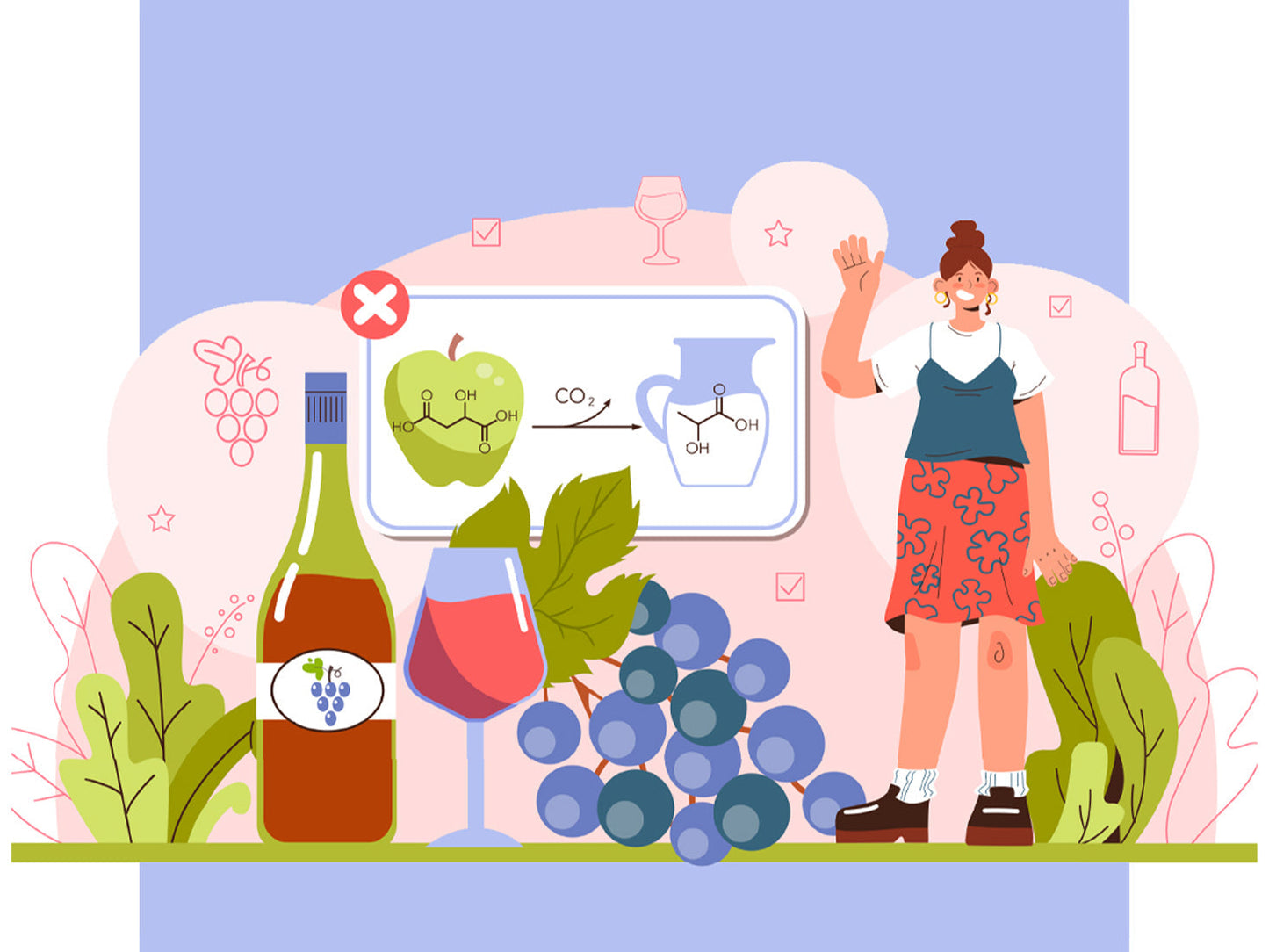
Photo: Shutterstock/inspiring.team
Text by: SW team
Why do some wines have a creamy texture and buttery taste, while others are sharp? The secret lies in malolactic fermentation – the conversion of sharp malic acid into soft lactic acid. It smooths out the profile of the wine and gives it a creamy, buttery flavor. Here’s what you need to know about malolactic.
We say "fermentation", however, MLF is more of a transformation. It does not require the participation of yeast, although the resulting release of carbon dioxide can create a false impression of fermentation. Malolactic is naturally triggered by lactic acid bacteria present in most wineries (on the walls, equipment, in barrels), in small quantities on the grapes themselves. Or made in a lab. Most often they are specially selected strains of Oenococcus oeni. These bacteria eat residual sugars, malic acid and other organic compounds left over from fermentation.
Malolactic. But why?
First of all, to reduce the acidity of the wine. This is especially useful for reds made in cool climates. Without malolactics, such wines can be overly sharp: sharp acidity coupled with a powerful tannin profile is no harmony. Whites made in cold climates can also have excessive acidity – MLF softens them. In warmer regions or in warm years in cool zones – it helps to maintain acidity. But there are exceptions. For example, in 2014, some Bordeaux winemakers made malolactics for Semillon and Sauvignon Blanc to raise the extremely low pH. Malolactics also help stabilize the wine. It reduces the danger of microbiological activity after bottling. If you don’t do MLF after fermentation, MLF can begin right in the bottle, which will lead to gas formation and a change in the taste profile. In addition, malic acid serves as a breeding ground for bacteria that can spoil the wine. At the same time, MLF corrects the sensory profile of the wine. During the transformation of malic acid into lactic acid, by-products are formed. One of them is diacetyl, which brings creamy, oily tones (valued in premium white cuvées, for example, based on Chardonnay), and also softens the texture of the wine. In moderate quantities, it enriches the wine, adding depth and complexity. However, in excess, its intense flavor and aroma range can dominate the subtle varietal nuances. It is important for winemakers to carefully control the process to achieve the desired balance.

Do all wines need malolactic?
Malo is almost a must-have for reds. This is because the grape skins release not only anthocyanins and tannins, but also a significant amount of malic acid which needs to be softened. For white wines, it’s up to the winemaker and depends on the style of the wine, the aromatic profile of the variety and its natural acidity. For example, Chardonnay is an ideal candidate for MLF – it has a neutral varietal profile, which allows the creamy and buttery notes that arise during malolactic conversion to enrich its texture, flavor and aroma. Riesling and Chenin Blanc require a more careful approach. Riesling has high acidity and a bright citrus-stonefruit varietal profile, and malolactic can suppress its character, so producers avoid it. The same applies to bright, fresh Chenin Blanc wines for quick consumption. However, for complex, oak-aged Chenins, MLF is used – this way they add complexity. Malolactic fermentation is not carried out for dessert, off-dry and other wines with residual sugar. In this case, Oenococcus oeni will focus on the “sweet stuff”, which can affect the stability of the wine, the acidity balance and the perception of sweetness. In addition, it can create a risk of developing undesirable by-products, such as volatile acidity.

Egly-Ouriet Champagne house intentionally dont use MLF to keep wines fresh, acidic and true to the terroir and the varietal aromatic profile.
How to prevent MLF
If malo is undesirable, it can be prevented after by lowering the temperature, adding sulphur to the wine, or adding the Lysozyme which selectively kills lactic acid bacteria. Winemakers can also isolate a batch in which malolactic fermentation has begun to prevent the bacteria from spreading further. To prevent malolactic fermentation in the bottle, the wine is sterile filtered before bottling. Natural winemakers reject this approach: they do not use lactobacilli to provoke malolactic fermentation and they often do not use sulphur in their wines before bottling. As a result, natural wines may bubble due to residual fermentation and spontaneous malolactic. This is why oldschool winemakers laugh at green winemaking.

How to feel MLF in wine?
Check its texture and taste. If the wine reveals creamy tones, has a round, creamy, slightly oily taste, then, most likely, malolactic was carried out. However, such qualities can also be associated with aging on the lees. Information about MLF is rarely found on back labels. You can study the technical sheets on the manufacturer's website. Look for mentions of MLF or acidity markers: the predominance of lactic acid over malic acid is a clear sign that malolactic was carried out. Another clue is oak aging if it appears in whites – then it’s almost 100% MLF-ed. At the same time, malo could only be done to a small batch, and its effect can be barely noticeable. Some producers refuse malolactic at all to improve varietal characteristics, vibrant acidity and crisp freshness. The biggest fight in malo or not malo is in the Champagne region, but that’s a complete another story!
